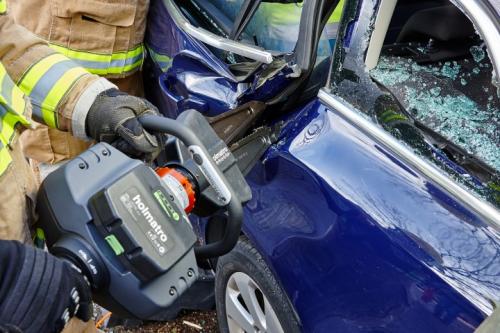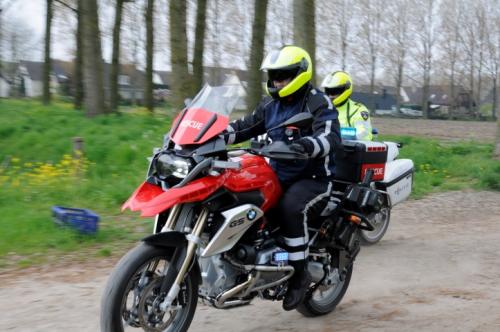Rapid Intervention (Part 1)
In the next two blogs I would like to talk about the subject of rapid intervention.
Rapid Intervention is a term that is often used when talking about vehicle extrication. In my experience, it seems to mean different things to different people and is often confused with rapid extrication (the rapid removal of a casualty from a vehicle for medical or safety reasons); something very different in my view.
There is little (if any) reference to the concept available in literature or standard operating procedures and it is not reflected in the Team Approach to road traffic collisions. As the use of Rapid Intervention is increasing as a concept, it seems entirely appropriate to offer a definition, apply some rationale and introduce a method that assists with pre-planning, training and implementation.
The Team Approach Rapid Intervention – a definition
‘A two-stage response to vehicle extrication initially using specifically chosen resources to establish a safe system of work, prior to gaining access to the patient. The arrival of additional resources facilitates extrication with the completion of the Team Approach.’
Some fire and rescue services provide a two-stage attendance to road traffic collisions. The Rapid Intervention response will usually arrive in the form of a smaller, often specially designed vehicle which carries strategically chosen equipment, including hydraulic rescue equipment (e.g. with combi tools) and a reduced number of personnel. Their role is to ensure a safe system of work (strategic planning) is established before commencing the Team Approach and gaining patient access on scene. The Supplementary Response provides support with additional personnel and equipment (dedicated cutter/spreader and hydraulic ram) to complete the extrication.
The Rapid Intervention response will usually arrive in the form of a smaller, often specially designed vehicle carrying strategically chosen equipment, including hydraulic rescue tools. Of course it can also be a motorcycle.
What do we learn from this model?
- The term ‘Rapid’ refers to the time taken to arrive at the incident due to the use of smaller, more agile vehicles and NOT the actual time taken to gain access to the patient (or to extricate them).
- There is a need to commence the initial phases of the Team Approach with fewer personnel than it was originally designed for (i.e. 5/6 personnel on scene).
- There is a clear distinction between the tools and equipment required for both phases of attendance.
- The two-stage response actually splits the Team Approach, based on personnel and equipment that is likely to be on scene initially.
- We are still endeavouring to extricate in 20 minutes or less (in line with the patient’s injuries)
Smaller vehicles, less equipment
The Rapid Intervention response will usually mean there are less tools, equipment and personnel available in the early phases of the rescue. Despite this, the same rules still apply and the Team Approach should be followed as far as practicable with the resources available. Due to the use of smaller vehicles the choice of tools and equipment for the rapid intervention attendance is crucial; size and weight is important whilst still ensuring that you have the necessary equipment to perform the required tasks.
Combi tools
We know that once stabilisation has been completed the main priority is gaining access to the patient. This allows a full primary survey to be completed and the degree of entrapment to be established: vital information to formulate the extrication plan. In terms of hydraulic extrication equipment, the combi tool is ideal for rapid intervention as it provides both spreading and cutting capacity and will allow the rescuer to gain entry through doors (if the vehicle is on its wheels or its roof) and through the rear hatch (if on its side or roof). Of course there is now a wide choice of combi tools with varying power sources i.e. battery powered, hand powered or standard hose/pump configuration (with the ability to also utilize a battery powered pump). Another advantage of combi tools is that they will save weight and can weigh far below 10 kg / 22 lb.

Other equipment
Other equipment may include a ram for space creation and a mini cutter which is ideal for removing pedals and head restraints. In addition to this, smaller assist tools are required to complete tasks such as peeling and revealing (removal of interior trim) prior to the space creation phase.
In my next blog, I will look at what Rapid Intervention means in terms of scene dynamics, preplanning and training.
As ever I welcome your comments!
Ian Dunbar
